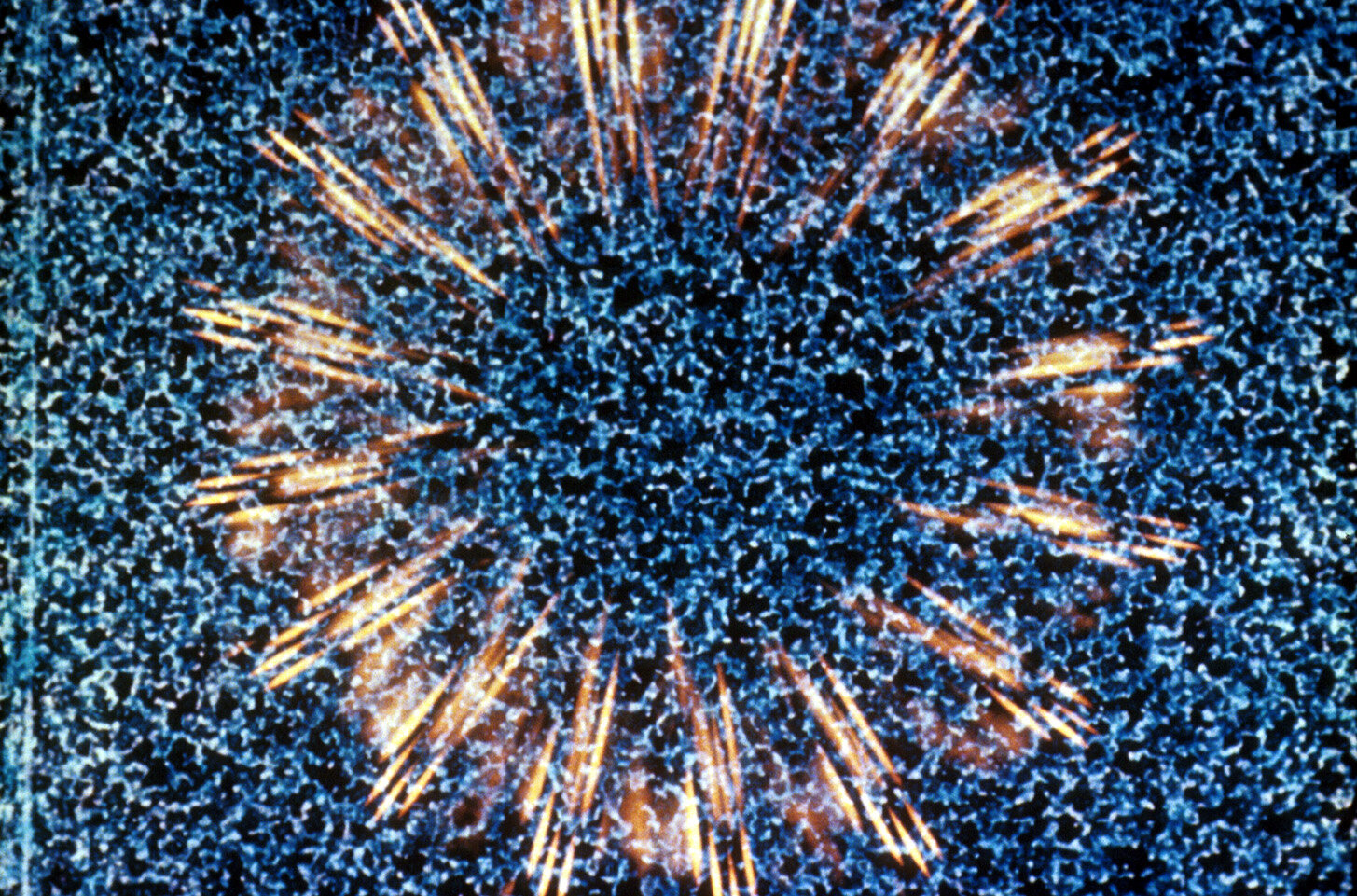Jordan Belson

Chakra, 1972
16mm film, transferred to HD video
Filmstill, 5:23 min.
Restored and courtesy Center for Visual Music, Los Angeles
“Certain phenomena manage to touch a realm of our consciousness so seldom reached that when it is awakened we are shocked and profoundly moved. It’s an experience of self-realization as much as an encounter with the external world. The cosmic films of Jordan Belson possess this rare and enigmatic power,” wrote Gene Youngblood, an eminent media arts theorist and critic in his book Expanded Cinema (1970).
Jordan Belson was a pioneer of avant-garde cinema in the twentieth century. Originally from Chicago he settled in the San Francisco Bay Area and studied painting at the University of California, Berkeley. In the late 1940s he began to make films. In the early 1950s, Belson undertook his first experiments with hallucinogens, and also turned to meditation and a strict yoga discipline, with the aim of expanding his consciousness. This led to films that were firmly controlled but also nonetheless ecstatic transcripts of a liberated spiritual vision. His mysticism notwithstanding, Belson was deeply committed to the principles of science. His technical mastery of color and light is fully evident in his films. At the beginning of his work with the medium of film, he hand-painted rolls of paper with watercolor and gouache paints and photographed each image to create animated sequences. Later on the artist would use various other techniques. During the 1970s some of his films were made with the help of a specially constructed machine, which basically consisted of a plywood frame around an old X‑ray stand with rotating tables and engines running at different speeds and light at different intensities. Sound plays an important role in some of his films, such as Chakra (1972) which is included in the exhibition. The soundtrack here is often so completely integrated with the pictures, that, as Belson says, “one doesn’t know whether one sees, or hears them.” His films could be understood as the rendition of synesthetic sensations in which the linkage between image and sound leads to the impression of a transcendental experience. The work Chakra already indicates this in its title. The doctrine of chakras is a traditional theory about different energy centers of the human body, and it is applied in yoga, tantric Hinduism, and esoteric movements. Classically, there are seven different chakras. In his film, Belson attempts to transfer these different energies beyond their traditional iconography (leaves or the lotus). The film progresses from the root chakra (1) to the crown chakra (7). Reading this thus takes a path from and beyond the physical realm into the transcendent realm. Belson left a unique body of work that is characterized by his enjoyment of experimentation and unconventional techniques, so that today he is counted among the most important artists of avant-garde cinema in the last century.
After studying painting in the 1940s, Jordan Belson (*1926 Chicago, †2011 San Francisco) turned to the medium of film and had made a total of over thirty films. In the process, he began to address various cultural, spiritual and religious frames of reference. “His varied influences include yoga, Eastern philosophies and mysticism, astronomy, Romantic classical music, alchemy, Jung, non-objective art, mandalas, and more,” wrote Cindy Keefer in 2008. His films have been shown at the Tate Modern in London; the San Francisco Museum of Modern Art; the Whitney Museum in New York;Centre Pompidou in Paris; among many others.
Chakra, 1972
16mm film, transferred to HD video, color, sound, 5:23 min.
Restored and courtesy Center for Visual Music, Los Angeles
Jordan Belson
studied painting in the 1940s, Belson turned afterwards to the medium of film and had made a total of over thirty films. In the process, he began to address various cultural, spiritual and religious frames of reference. “His varied influences include yoga, Eastern philosophies and mysticism, astronomy, Romantic classical music, alchemy, Jung, non-objective art, mandalas, and more,” wrote Cindy Keefer in 2008. His films have been shown at the Tate Modern in London; the San Francisco Museum of Modern Art; the Whitney Museum in New York; Centre Pompidou in Paris, among many others.